Today we’re walking through our simple and cost-effective DIY solution to bring more ambient light to the backyard of our Michigan Tree House.
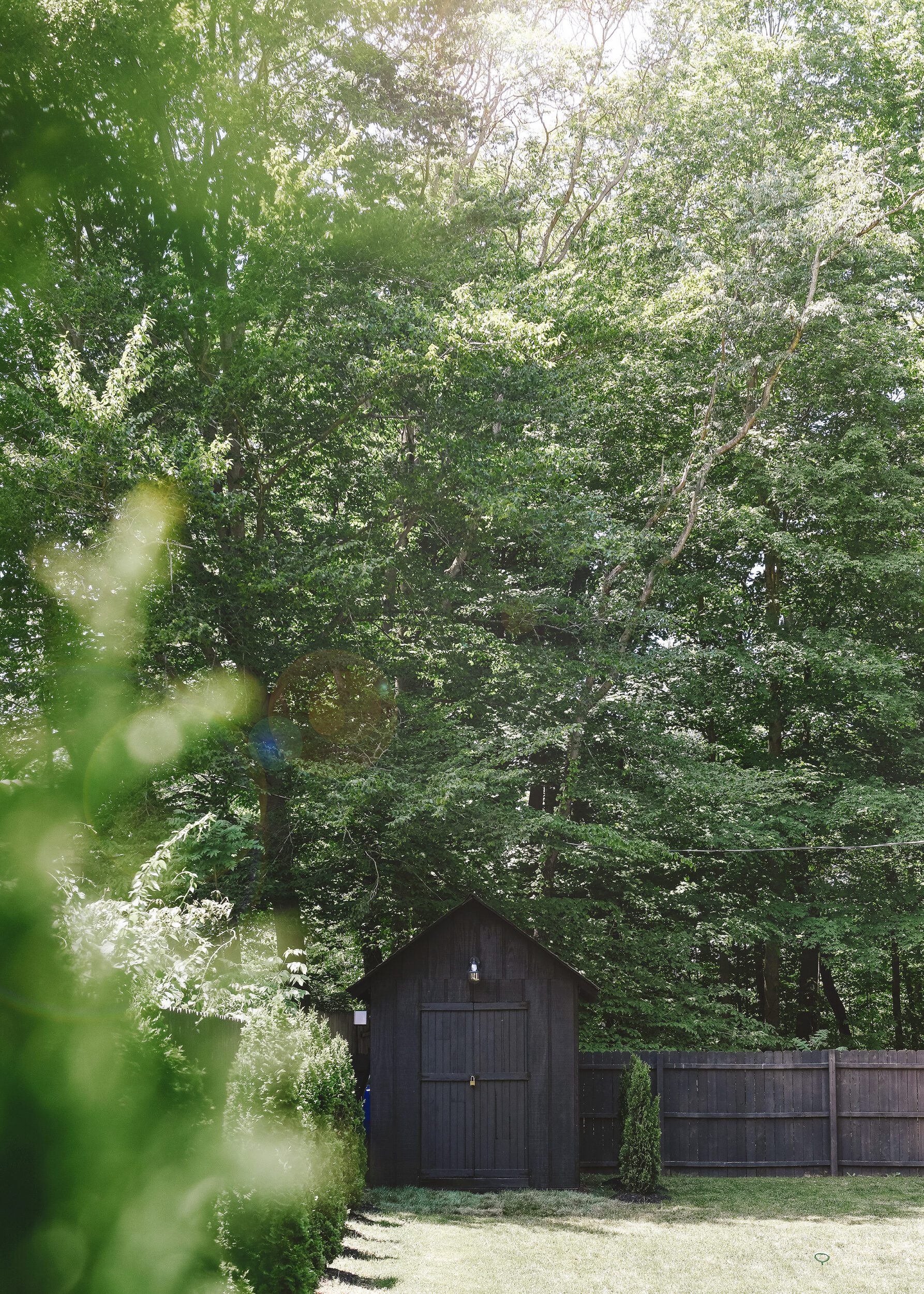

When we purchased our Michigan Tree House all the way back in 2017, one of the biggest selling points for us was the property itself. While there are neighboring homes on two sides of our yard, we’re also flanked by mature trees and a completely wooded lot to the West. It feels very private and solitary in the best way. That said, with all of the mature trees, once the sun fades through the woods it gets dark fast. Like really, really dark! Over the years, we’ve added automated smart landscape lighting out front and upgraded all of the house’s exterior lights. Last summer, we gave our shed a tidy makeover and added what would be the start of a whole solar lighting ecosystem.
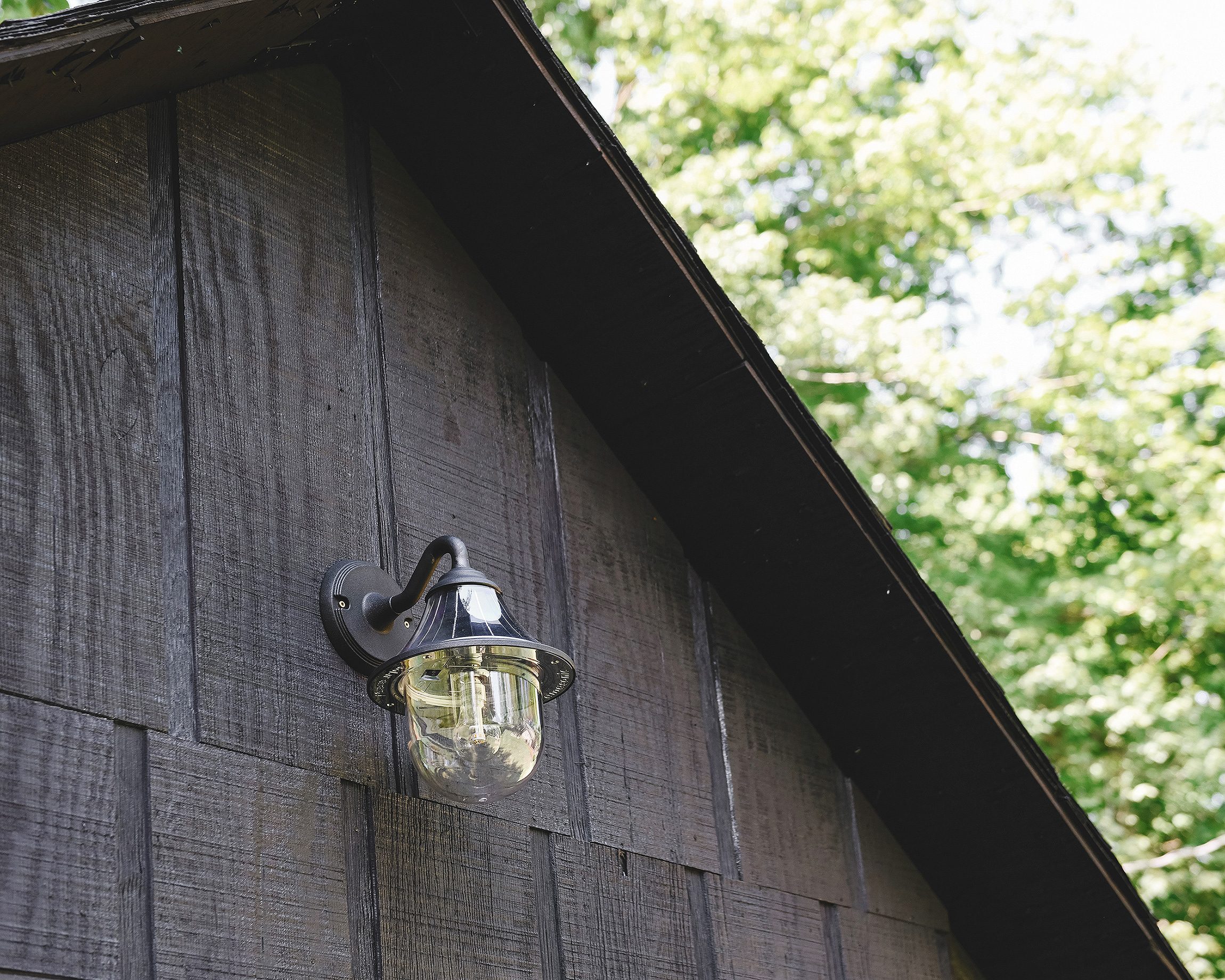

Why Solar?
For both the shed and the newly added fence lighting, our primary reason for installing solar lighting is simple – there is currently no electrical service to this corner of the yard! Solar lighting has come a long way and with simultaneous advancements in LED technology, it’s now brighter, longer-lasting and better looking than ever. The exterior solar light that we added to the shed is even styled with hidden solar panels on top for a sleek and timeless look. It comes on automatically at dusk and stays lit as long as possible.
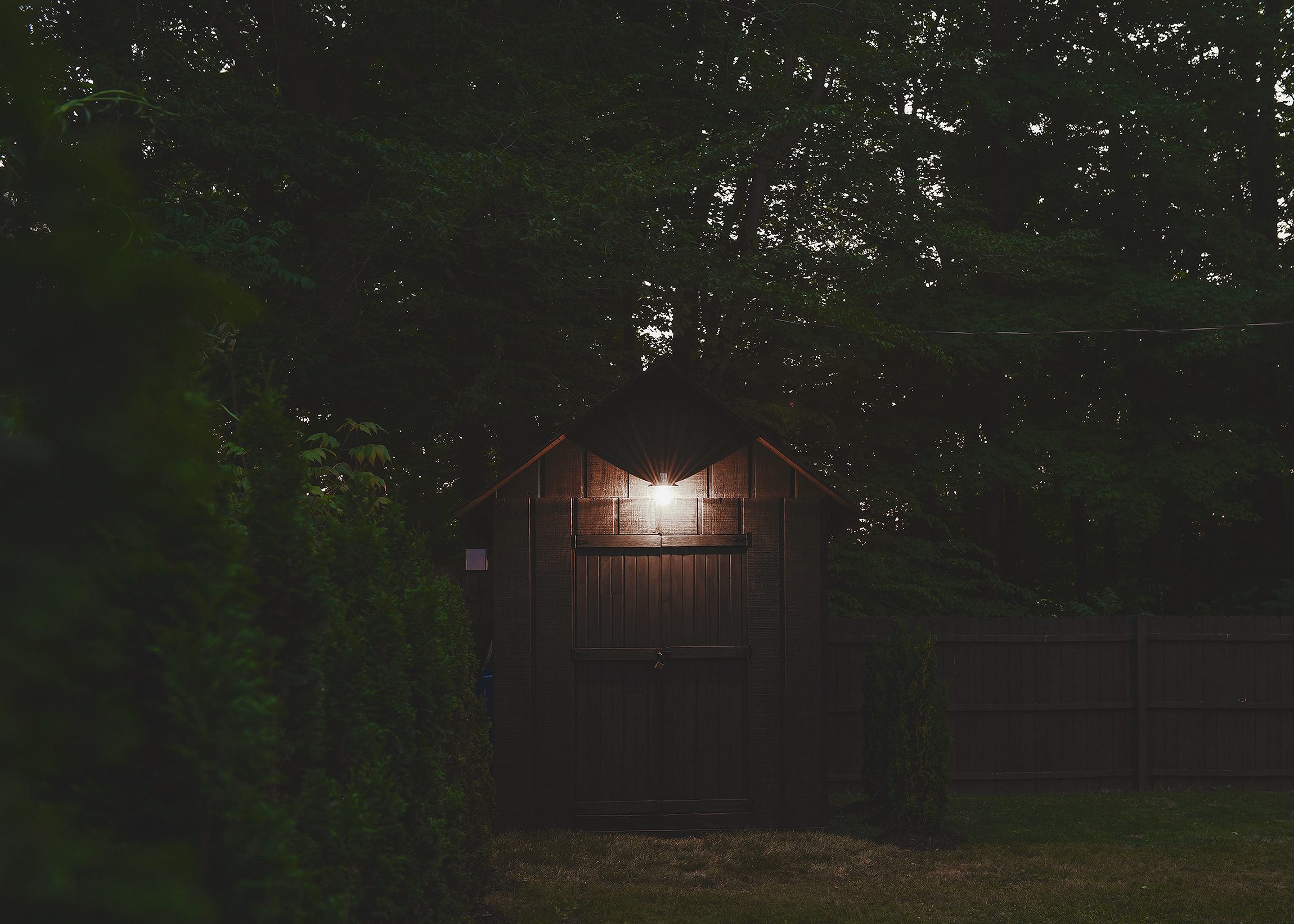

The interior light inside the shed features an external solar panel (located just below the roofline on the left side of the structure) and an onboard motion sensor that allows it to operate without any switches. Simply throw the doors open when it’s dark out and the light comes on by itself!
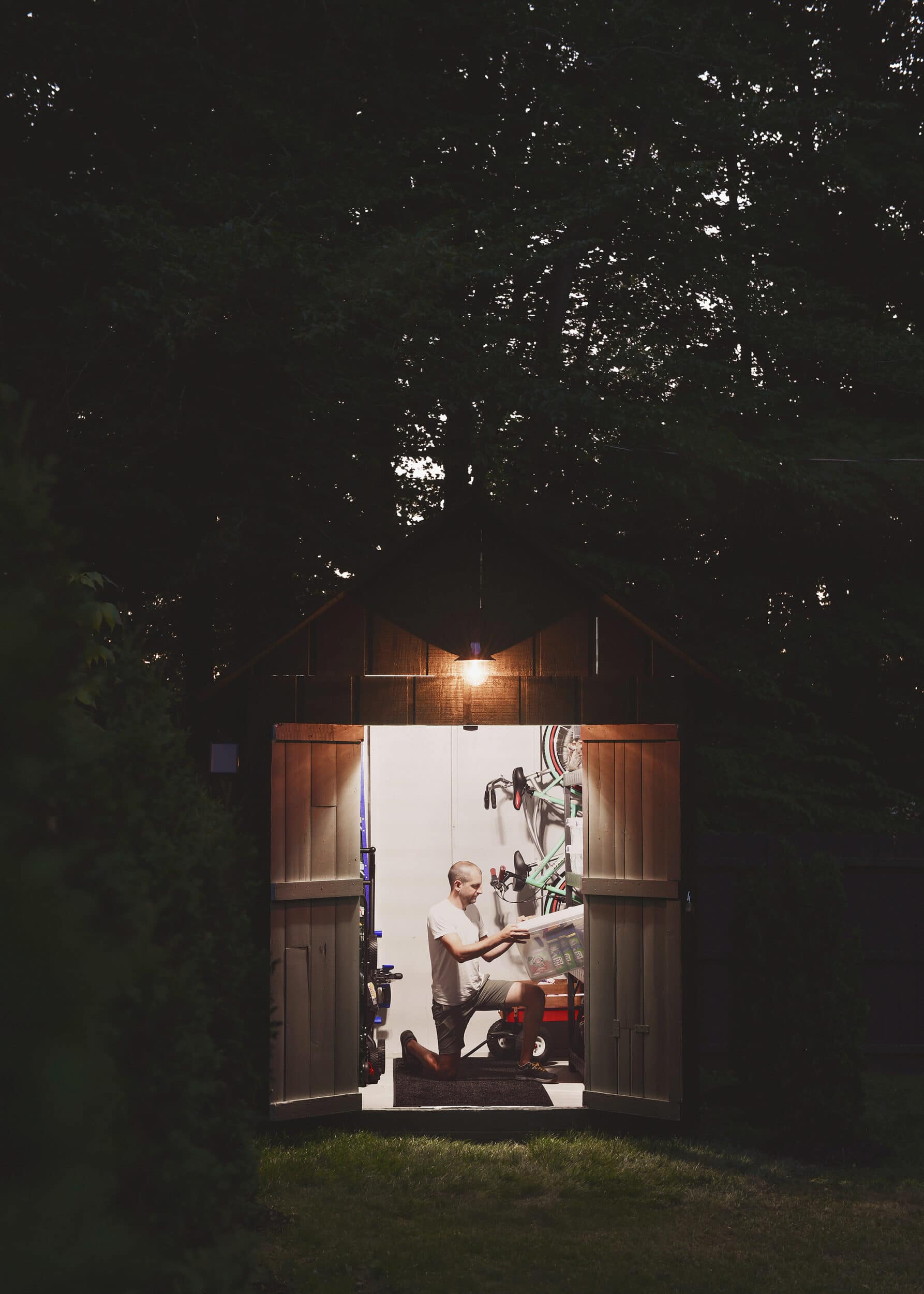

All of these advancements are incredibly cool and these lights were an absolute game-changer. Why, you might ask? Let’s talk about the benefits of solar lighting.
Benefits of Solar Lighting
We chose solar lighting for a number of reasons.
- Solar lights are energy-efficient and cost effective.
- Using solar lighting allowed us to avoid the expense of running electrical service to the far corner of our yard (which could have cost hundreds or even thousands of dollars). This also makes installation a breeze. If you can hang a picture, you can install this solar fence lighting!
- Many modern solar lights feature automatic on/off functionality, timers and even multiple colored light options.
- No more fumbling with flashlights or headlamps when accessing the shed at night!
With these benefits in mind, and a desire for even more ambient light in the backyard, a long search led us to purchase two packs of these solar fence lights. They checked all of the necessary boxes for us – they’re discreet, subtle and automatic!
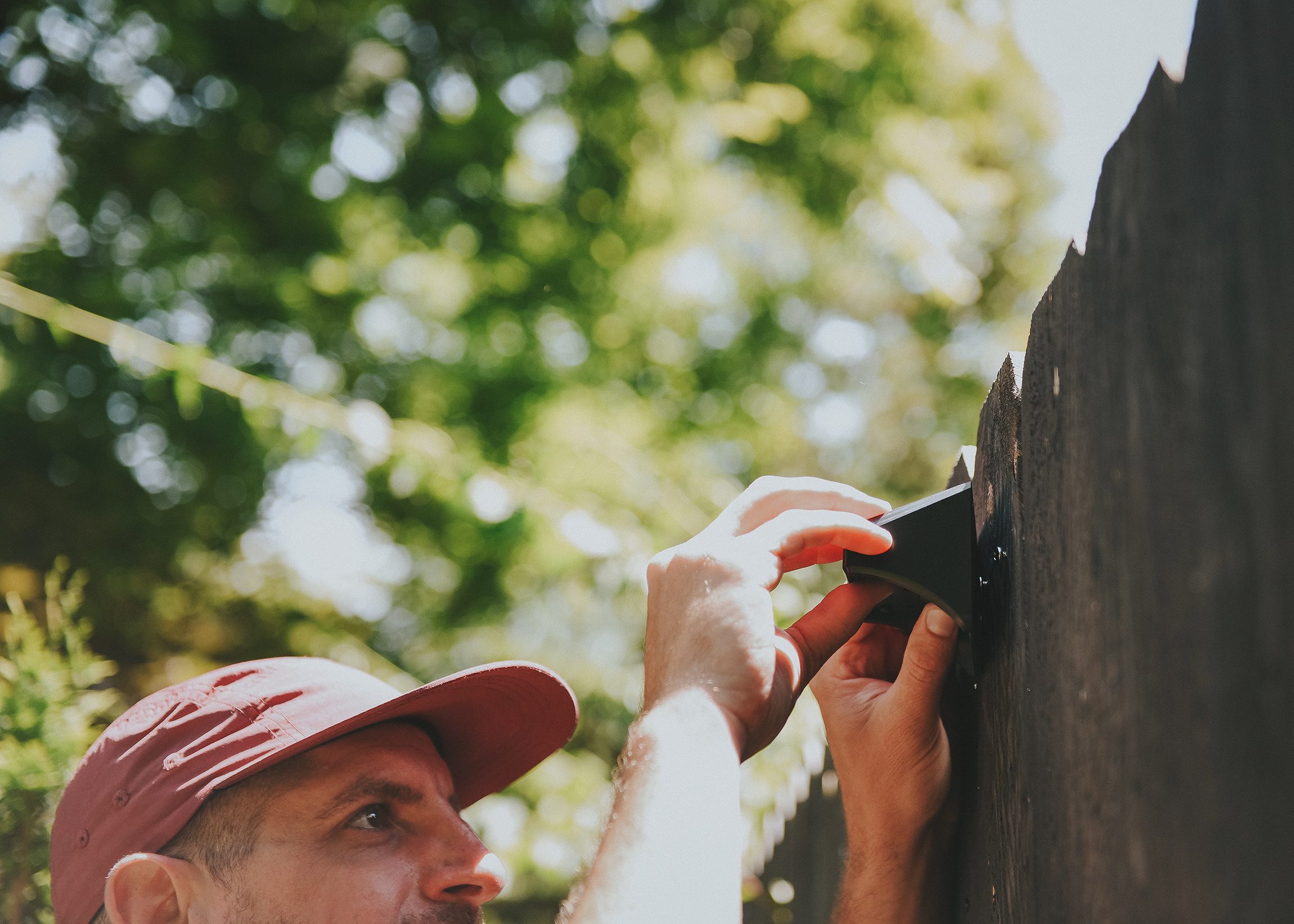

The installation was so easy! Once we had the spacing figured out, I think I had all 16 of them installed in 45 minutes or so. The lights charge during the day, then turn on automatically when the sun goes down. In the morning, when the sun rises, they shut themselves back off! While these fence lights suit our needs perfectly, they’re not without drawbacks. Let’s touch quickly on the drawbacks of solar lighting.
Drawbacks of Solar Lighting
While solar lights can be relatively inexpensive (these worked out to around $8.50/ea.), they’re not without their inherent flaws. These are a few unavoidable limitations of solar lighting:
- Solar lights (obviously!) receive their energy from the sun. If skies are consistently overcast for a few days, they don’t last very long once they turn themselves on for the evening.
- Since many solar lights rely on photo sensors to turn on automatically at dark, it isn’t possible to control the timing of when they turn on and off.
- Solar lighting should be considered more so as ambient lighting, as they typically don’t shine as bright as their hardwired counterparts.
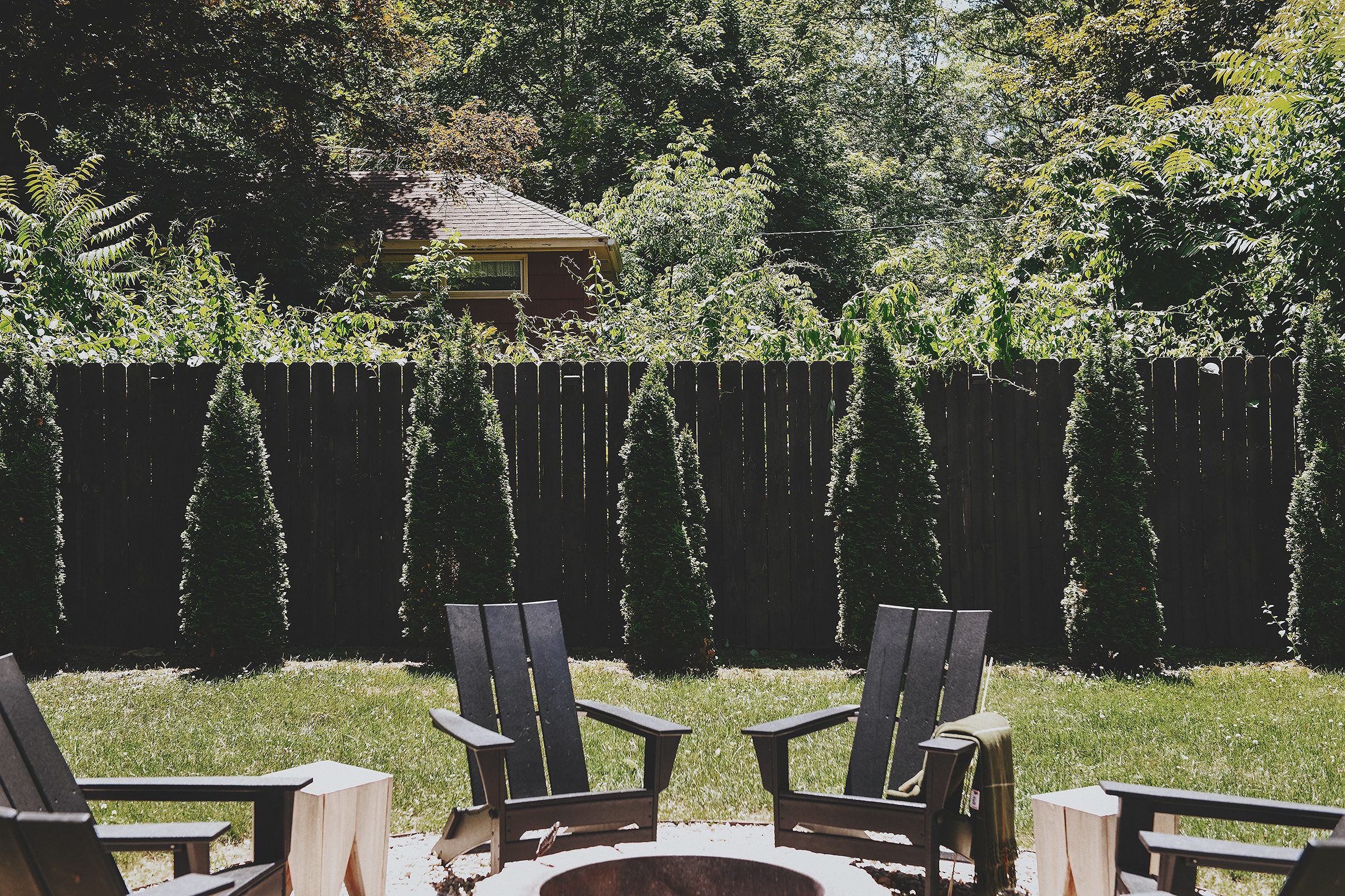

While solar has its drawbacks, these compact lights were perfect for the fence installation. When they’re not on, they’re nearly invisible against the black pickets! When darkness falls, they switch themselves on automatically with nice subtle downlight that can be configured in multiple different color options.
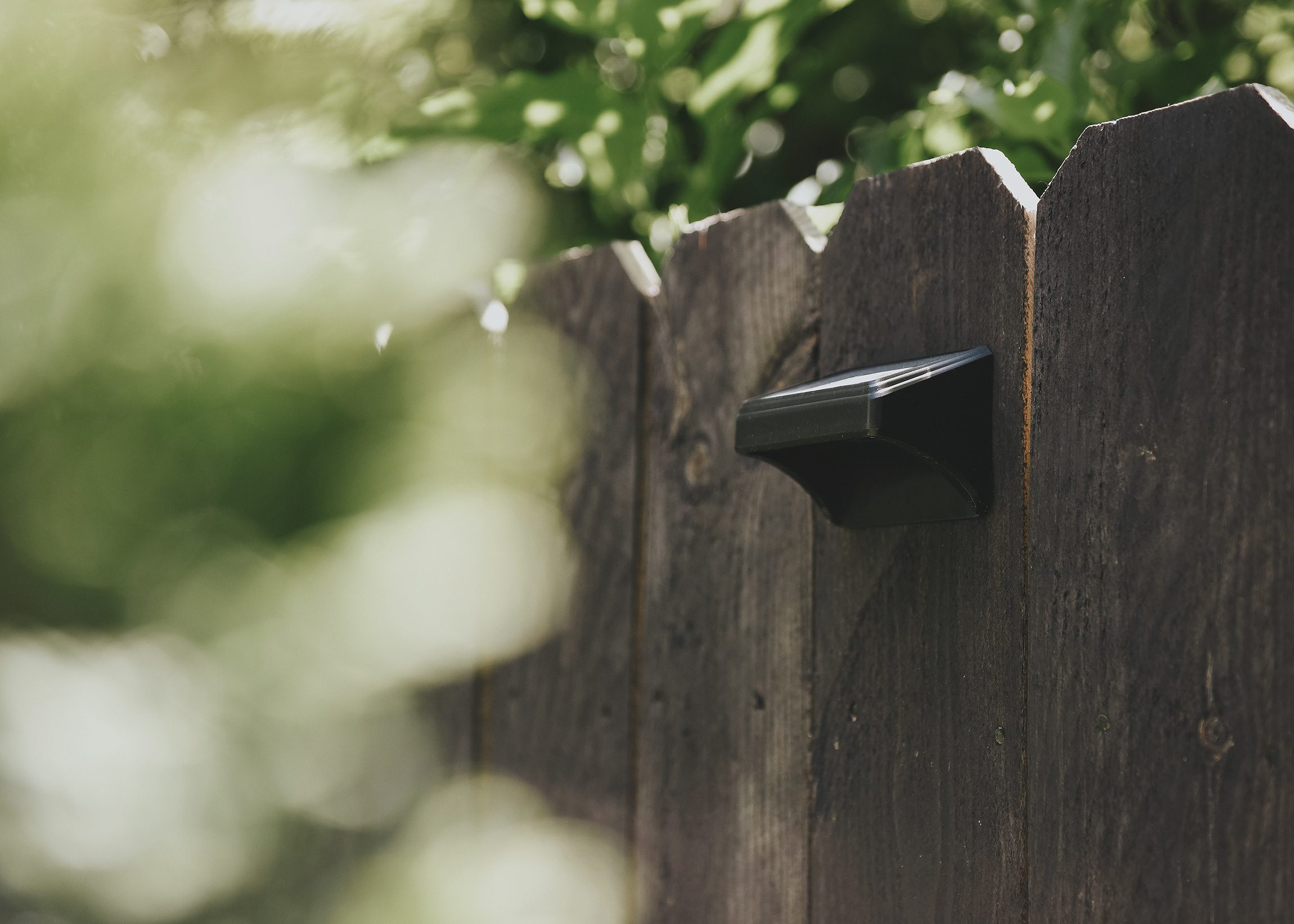

Other Options to Consider
If solar lighting isn’t the best fit for your home, there are tons of hard-wired or plug-in landscape lighting options on the market. We absolutely love the Philips Hue Lily outdoor lighting kit that we installed in the front yard at Tree House. It’s smart home compatible and offers an incredible amount of adjustability in automated timing, color and brightness. Keep an eye out – we’ll be installing the exact same kit in our freshly landscaped Chicago front yard very soon! For a more budget friendly version, we installed a kit similar to this one in our Chicago backyard a few years ago. It certainly doesn’t feature as many bells and whistles as the Hue kit, but we think its a great value.
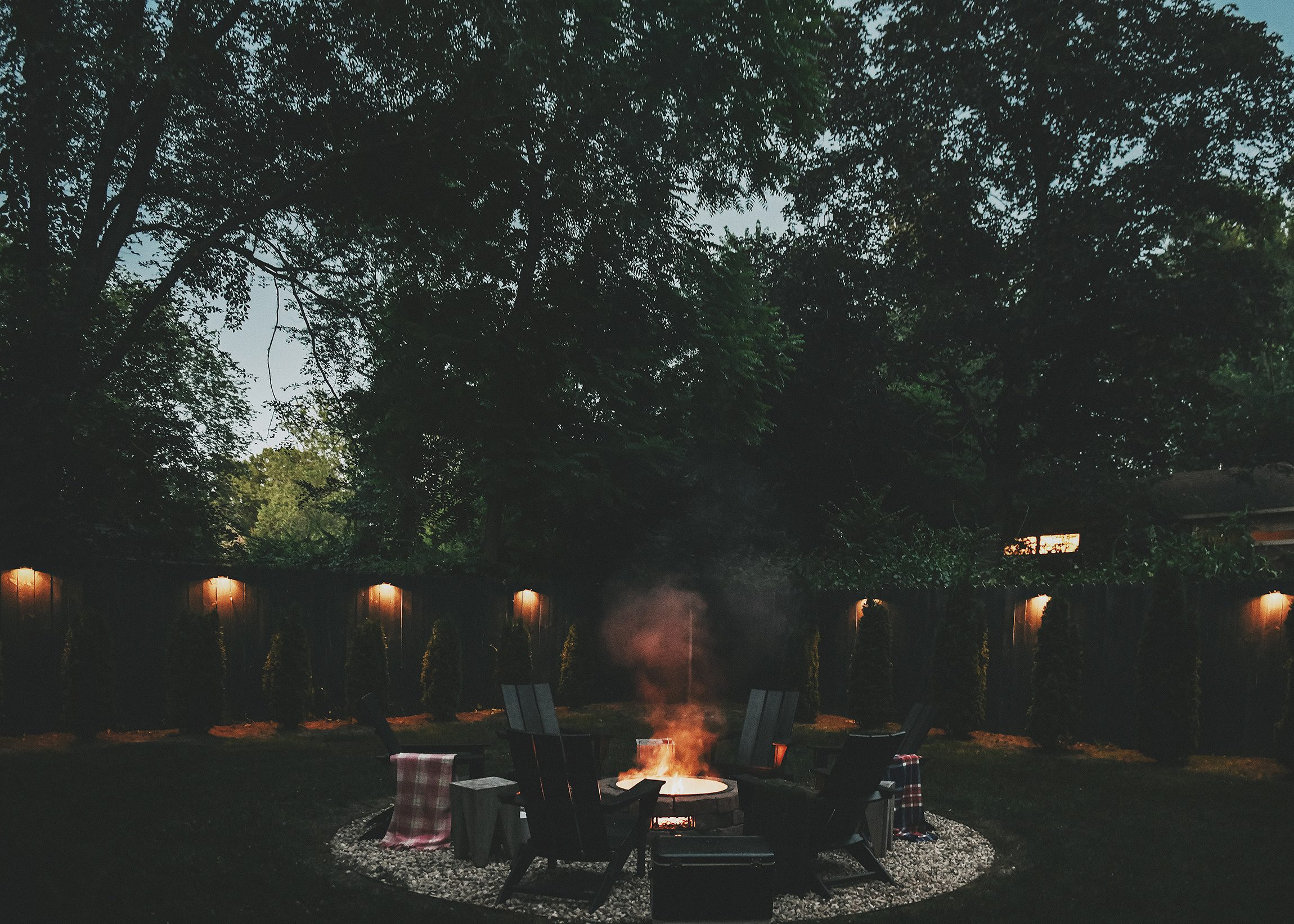

The addition of these solar lights brings the Tree House backyard one step closer to completion! In the very near future, we’ll also be expanding upon our Philips Hue system in the front yard to light up the area along the driveway. We’ve also purchased a simple dimmer switch that will allow us to dial in the perfect amount of light from the fixture above the back door. Slowly but surely, we’re getting the exterior lighting exactly where we want it!
PS: Our Tree House exterior has been evolving for the last 5 years. Here’s where it all started. Then it got much, much worse. Then we planned a massive set of upgrades. Then we revealed the upgrades! This is by no means a comprehensive list, but you can dive deep into the tree house renovations here.
PPS: We’re also oddly passionate about the right lighting options for every space. Check out more lighting posts here, here, here and here!










It does look very nice, and it’s awesome that you’re not using more electricity, but please be aware that artificial landscaping lights can adversely affect bird migrations and nocturnal activities of other wildlife. Your lights on the fence, however, are warm-hued and down-lit, which is excellent. Please consider adding timers, if possible, to turn off lights after you would typically go to bed, especially during migration seasons (spring & fall).
Here are a few articles that lay out how landscape lighting can be harmful to wildlife, and how to design outdoor lighting that won’t be disruptive:
https://www.houzz.com/magazine/landscape-lighting-that-doesnt-wake-the-birds-stsetivw-vs~76419325
https://www.totallandscapecare.com/business/article/15040857/using-outdoor-lighting-to-help-out-local-wildlife
https://theconversation.com/want-to-save-millions-of-migratory-birds-turn-off-your-outdoor-lights-in-spring-and-fall-114476
Agree, agree, agree! Thank you Ginger!
Thanks for the insight! All of our non-solar landscape lighting turns off automatically around our bedtime. In addition, all of our exterior lights are ‘dark sky’ approved and set to timers. We truly appreciate the darkness of our surroundings in Michigan.
Thanks for mentioning your lights are Dark Sky approved. Every few months I begin my search again for landscape lighting that is solar-powered (no electricity where I need it) and dark sky approved. It seems to be such a rare combination! This post has reminded me to look again, and the fence lights seem like a good answer for a few of my trouble spots. I wish more manufacturers would highlight the Dark Sky approval.